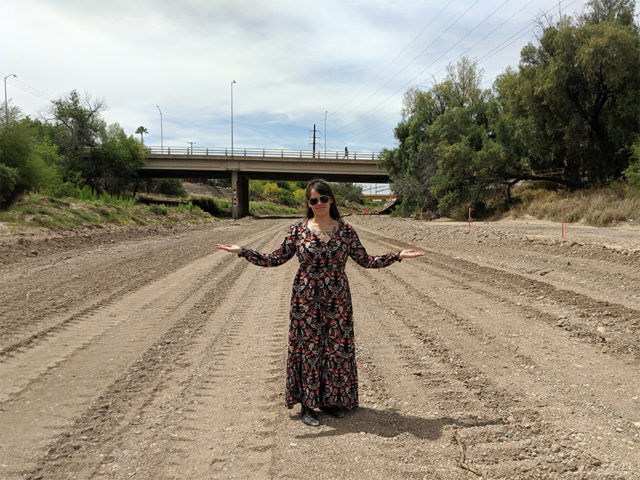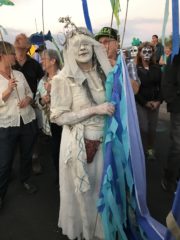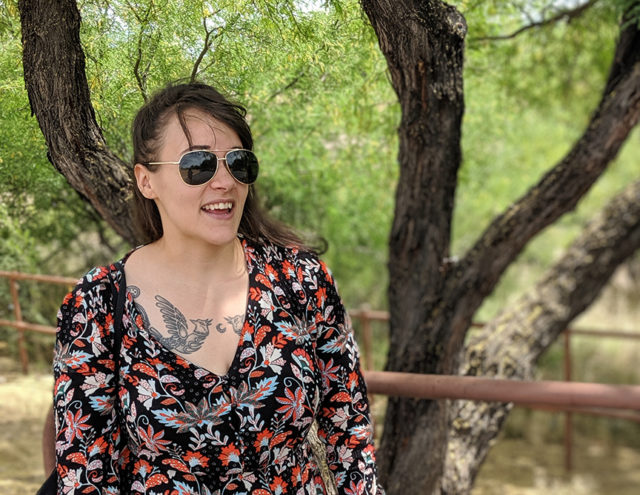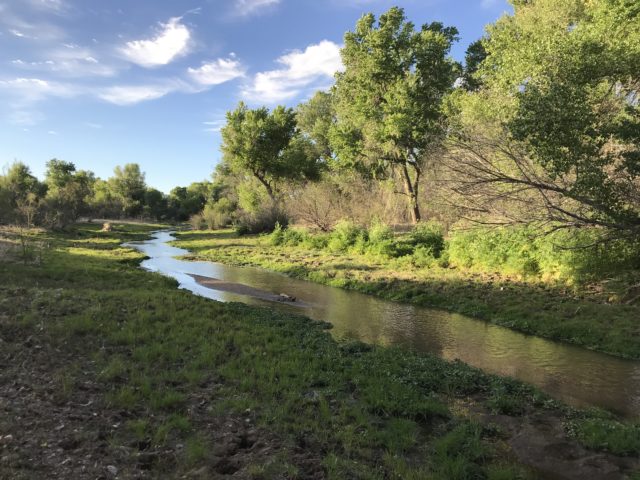Elise Christmon leans in as if to tell a secret. “If you want to see something cool and unexpected, come see the Santa Cruz River. You think you have an idea of what southern Arizona looks like, but that’s going to completely change your mind…”

It is spring in Tucson, and Elise is standing in a long dry section of riverbed near downtown Tucson. I’m joining Elise on a walk along the Loop toward the new shops and restaurants at the MSA Annex to meet her partner.

Elise pauses to reminisce about the time she dressed as La Llorona, walking in a long, white dress and veil along the “ghost river” during the 2017 All Souls Procession. Legend goes that La Llorona drowned her children in a river after her husband abandoned them and is doomed to search the river for the bodies of her children until the end of time. Whether or not you believe in ghosts, today’s Tucson seems an odd setting for this tragic folklore—the river in Tucson can be dry as a bone.
However, there are several reaches with flowing water. Elise describes the contrast of where we’re walking with the unique sections of the Santa Cruz River near Tumacácori and Tubac where the river still supports a dense forest of the rare and beautiful large cottonwoods that make Southwestern rivers special. Remembering her first time seeing one of these flowing sections, she says, “You step back in time if you go to those places. It’s magical.” It’s almost a portal to Narnia.

“You see what this region used to be like. The first time I went to Tumacácori, everything clicked in my mind. Seeing the flowing reaches elsewhere helped me understand what we, in Tucson, stand to gain as a city. For the everyday Joes who lived there, the river was part of their life, their culture! Rivers are for the people. They need to be protected for the many, not for the few,” says Elise.
“Rivers are for the people. They need to be protected for the many, not for the few.”
—Elise Christmon
She has even brought her partner to the flowing reach near Tumacácori to share her enthusiasm, saying “He actually was not familiar with the flowing stretch either. I took him down to do a park-to-park hike, from Tumacácori to Tubac. He was very impressed; he did not realize how nice it was. I also convinced him to go down and do one of those trash pick up days with me. And, he’s not a ‘let’s go out and volunteer’ kind of guy, but he said, ‘Oh yeah, I’m going to pick up trash because this is really cool, and I think other people should be able to see it!’”

Continuing along our walk, Elise shares what she thinks we have to lose, saying, “Unchecked development took our river from Tucson. Now, these new stretches are coming back after decades. It’s a great thing and took a lot of coordination to make it a reality. But, it’s important to protect what we have so we don’t lose it… Let’s not take the river near Tumacácori for granted, or we could lose it for good.”
This post is part of a a series of community voices about the Santa Cruz River.
Read the other posts by clicking the links in the introduction: When You and the River Meet
Blog series by Amanda Smith, Program Coordinator.
Copy-editing and audio-editing services donated generously by Nicole Cloutier and Richard Brown.
